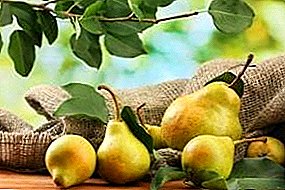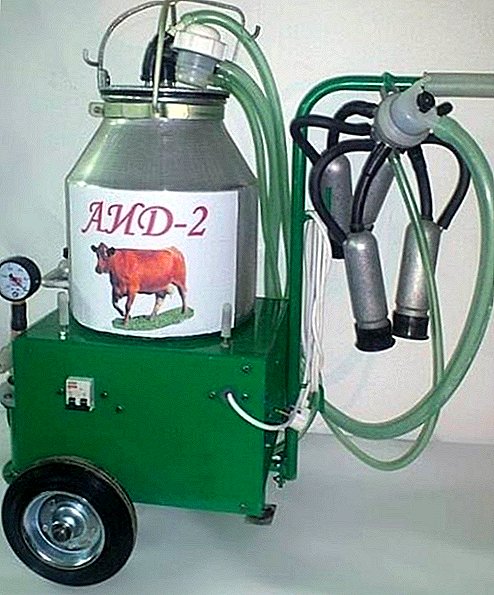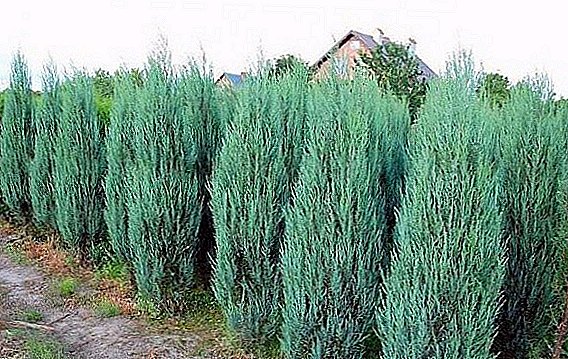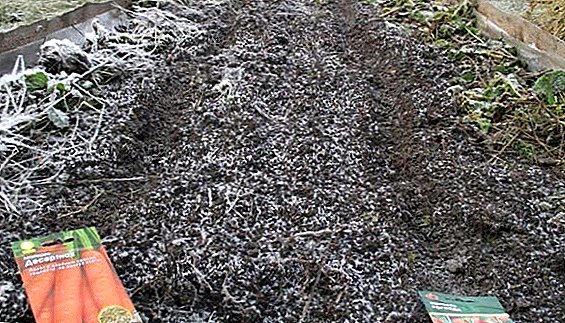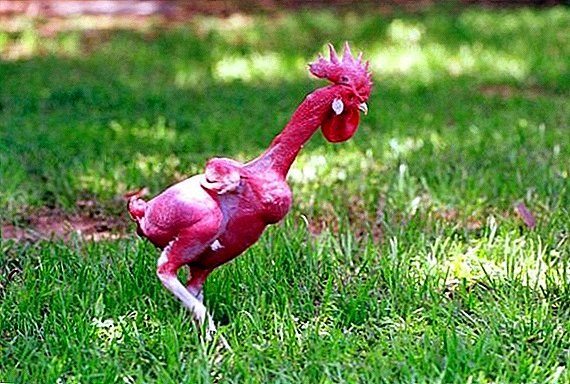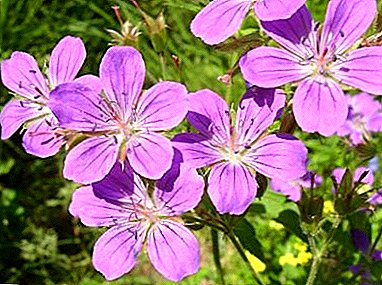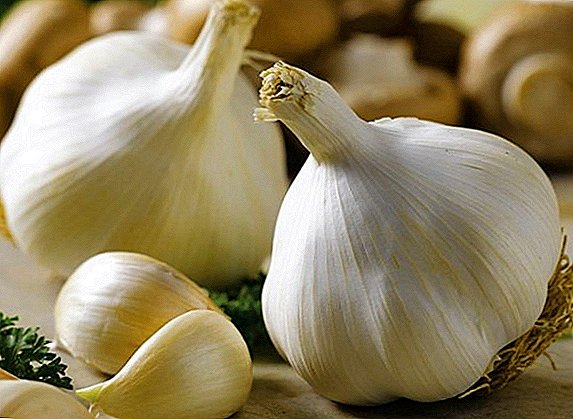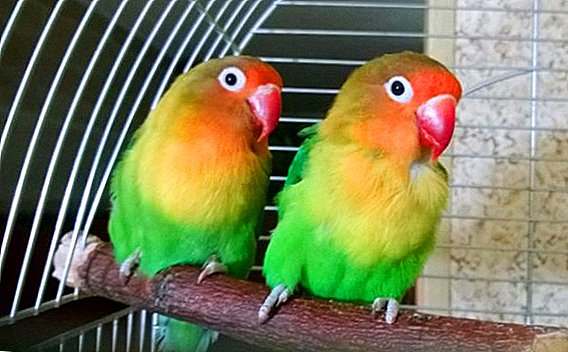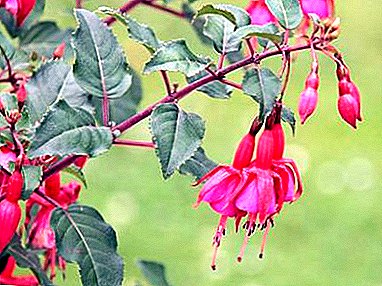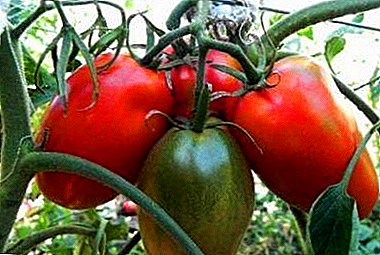
This variety is recognized by gardeners and does not need special advertising, but for novice gardeners it can be an excellent find for growing large, excellent taste of tomatoes.
De Barao Giant is very much in demand by farmers. After all, these tomatoes have great taste, while maintaining a magnificent view.
In this article you will find a detailed description of the variety, its main characteristics and peculiarities of cultivation. And also get acquainted with the information about the propensity to diseases and other subtleties of agricultural engineering.
Tomat De Barao Giant: variety description
 In terms of ripening, the variety is characterized as medium late. But according to numerous reviews, it is more suitable for varieties of late ripening. From the appearance of seedlings to the collection of the first ripe tomatoes, 123-128 days pass. All gardeners are unanimous in their opinion about where to grow this variety. Only greenhouse or greenhouse! The opportunity to land in open ground is only in the south of Russia.
In terms of ripening, the variety is characterized as medium late. But according to numerous reviews, it is more suitable for varieties of late ripening. From the appearance of seedlings to the collection of the first ripe tomatoes, 123-128 days pass. All gardeners are unanimous in their opinion about where to grow this variety. Only greenhouse or greenhouse! The opportunity to land in open ground is only in the south of Russia.
Indeterminate bush. It is necessary to form on the trellis, requires tying the bush and fruits. Reaches a height of 190-270 centimeters. The tomato shows the most successful indicators during the formation of the main stem by two stems. The second trunk lead from the first stepson, the rest must be removed. The variety has a good fruit formation, even under relatively unfavorable conditions. The number of leaves is insignificant. Leaf color is green; leaf shape is normal for tomatoes.
| Grade name | De Barao the Giant |
| general description | Late, indeterminate variety of tomatoes for growing in greenhouses. |
| Originator | Brazil |
| Ripening | 123-128 days |
| The form | Fruits are round or plum-shaped, some slightly elongated and have a characteristic spout. |
| Colour | Red with green spot on the stem. |
| Average tomato mass | 350 grams |
| Application | It is used in salads, marinades, sauces, ketchups, for salting. |
| Yield varieties | 20-22 kg from 1 plant |
| Features of growing | One square meter is not advised to plant more than 3 bushes. |
| Disease resistance | Resistant to most diseases, not afraid of late blight. |
Grade advantages:
- good taste;
- high yield;
- universality of the use of fruits.
You can compare the yield of a variety with others in the table below:
| Grade name | Yield |
| De Barao the Giant | 20-22 kg from a plant |
| Polbyg | 4 kg from a plant |
| Kostroma | 5 kg from a bush |
| Lazy man | 15 kg per square meter |
| Fat jack | 5-6 kg from a plant |
| Lady shedi | 7.5 kg per square meter |
| Bella Rosa | 5-7 kg per square meter |
| Dubrava | 2 kg from a bush |
| Batyana | 6 kg from a bush |
| Pink spam | 20-25 kg per square meter |
Fruit Description:
- The fruits are similar to plum, rounded, some fruits with an elongated, characteristic spout.
- Well-marked red with a green spot on the stem.
- In each hand from 6 to 11 fruits weighing about 350 grams.
- One square meter is not advised to plant more than 3 bushes, each of which can give about 20-22 kilograms of tomatoes.
- Excellent presentation, good preservation during storage and transportation.
- Good taste in salads, marinades, sauces, ketchups, pickles.
The weight of the fruits of other varieties you can see in the table below:
| Grade name | Fruit weight |
| De Barao the Giant | 350 grams |
| Red Guard | 230 grams |
| Diva | 120 grams |
| Yamal | 110-115 grams |
| The Golden Fleece | 85-100 grams |
| Red Arrow | 70-130 grams |
| Raspberry jingle | 150 grams |
| Verlioka | 80-100 grams |
| Countryman | 60-80 grams |
| Caspar | 80-120 grams |
A photo
Below you will see the pictures of tomatoes of the “De Barao Giant” variety:



 We bring to your attention useful information about what determinantal, semi-determinant, superdeterminant and indeterminant varieties of tomatoes are.
We bring to your attention useful information about what determinantal, semi-determinant, superdeterminant and indeterminant varieties of tomatoes are.As well as a few articles on high-yielding and disease-resistant varieties.
Features of growing
Seeds for seedlings are best planted after pre-treatment with a solution of 2% potassium permanganate. The best option for planting seeds would be a mixture of soil taken from the beds after growing dill, eggplant, carrots and well-rotted humus, taken in equal shares. You can use mini-greenhouses and growth promoters.
Add 15 grams of urea and potassium chloride, a glass of wood ash. Mix the mixture and plant seeds in it, to a depth of about 1.5-2 centimeters. It is necessary to pour water at room temperature well, not to allow complete drying of the earth in the future. Pick up, combined with seating, to carry out with the appearance of 2-3 true leaves.
In the last decade of April, the first decade of May, you can plant seedlings in a greenhouse. Need to feed plants every two weeks.
Read more about how to feed tomatoes.:
- Organic fertilizers.
- Yeast
- Iodine
- Hydrogen peroxide.
- Ammonia.
And also, why do we need boric acid when growing tomatoes?
Sort De Barao giant is characterized by prolonged fruiting. With good care, compliance with the rules of watering, you will notice that the flowering and development of fruits will continue until the first October frosts, providing you with large, fresh tomatoes of excellent taste. Do not forget also about such agrotechnical methods as mulching and burying.
Diseases and pests
Tomatoes of this variety are not at all afraid of late blight and are generally not susceptible to most common solanaceous diseases. For prevention, use standard methods.
 Read also about the varieties of tomatoes are not only resistant to diseases, but also capable of giving a good harvest.
Read also about the varieties of tomatoes are not only resistant to diseases, but also capable of giving a good harvest.And about such common diseases as fusarium wilt and verticillis. What kind of measures against late blight can be taken
On our site you will find a lot of useful and interesting information. Read about how to grow a good harvest in the winter in the greenhouse, how to do it in the open field in the summer, what the finer points of growing early varieties exist.
In the table below you will find links to other varieties of tomatoes with different ripening periods:
| Mid-season | Middle late | Medium early |
| Chocolate Marshmallow | French grapevine | Pink Bush F1 |
| Gina TST | Golden Crimson Miracle | Flamingo |
| Striped chocolate | Miracle of the market | Openwork |
| Ox heart | gold fish | Chio Chio San |
| Black Prince | De Barao Red | Supermodel |
| Auria | De Barao Red | Budenovka |
| Mushroom basket | De Barao Orange | F1 major |


